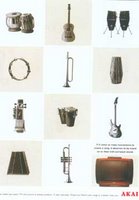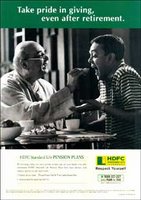Company: Videocon
Agency:SSC&B
Brand Count 118
 ir Mulchandani.
ir Mulchandani.Akai was launched in India in 1995 and there after the CTV market was never the same. Before Akai, the CTV was a luxury affordable only to the middle class and above. The starting price of CTV at that time was Rs 15000 and above. It was a big task for a middle-income family to afford one at that time.
Players like Videocon, BPL, Philips and Onida dominated CTV market at that time. Akai had to break the stronghold of these players and how they did it is one of the greatest marketing success stories ever.
From 0 to14% market share within 18 months. That was the outcome. Akai did this by going by the advice of Don Corleone “ Make an offer that no one can refuse”.
“ Rs.9999 for a 21 inch color television” screamed full-page ads in newspapers. It was for the first time that a consumer durable marketer took full pages that too frequently. Along with the price, Akai invented the concept of exchange schemes into the Indian market and customers loved it. Nobody could believe the offer and the price. I don’t think anyone now also knew how it worked out.You go to the dealer with an old TV and you could get a discount of Rs 5000 on the new one. WOW…
Akai positioned itself as a price warrior and the heritage factor of being a Japanese company boosted the brand image of the company. The tag “Made in Japan” always impresses Indian consumers and it helped Akai to scale up in the market with in a short span of time.
Baron also took an unconventional distribution strategy by advertising heavily before the product hit the market. This created rush in the market and distributors paid upfront to get the orders and the company had the money before selling its product. The additional margins also satisfied the dealers.
The price
 and the hype affected the market share of the leaders in CTV market .All the players cut their prices as high as 40% so as to survive. This prompted customers to believe that they were being forced to pay a higher price before Akai came into the market. The price offers expanded the Indian CTV market like a rocket propeller
and the hype affected the market share of the leaders in CTV market .All the players cut their prices as high as 40% so as to survive. This prompted customers to believe that they were being forced to pay a higher price before Akai came into the market. The price offers expanded the Indian CTV market like a rocket propellerAkai ran into rough weathers shortly after 1998. Akai globally was owned by Ontario based Semi Tech corporation. Baron ‘s relationship with Semi Tech became rough. Baron, to tide over the probability of severing ties with Akai, forged a deal with Aiwa of Japan for marketing Hi Fi music systems.
Kabir Mulchandani did the same with Aiwa selling the brand at a price unheard of and making the product category reachable to middle class. But Aiwa as an upscale brand ( 51% of the co is owned by Sony) was not happy by this positioning ,however an the brand was looking for an upstart in the Indian market and Kabir’s strategy helped Aiwa to create a brand awareness and expand the market.
Akai thus severed its association with Baron and forged a marketing relationship with Videocon. Videocon was marketing the brands of Semitech like Sansui.
Akai struggled to shrug of the image of a low price brand which was strongly embedded in the mind of the Indian consumer. As Mr Abrahan Koshy of IIMA says ‘ Discounted brands are promotion dependant” so to survive Akai had to spend heavily on Advertisements and it was a difficult proposition.
Baron later tried its luck with another Chinese brand TCL but could not succeed. Once a poster boy in the media and once acclaimed as a marketing whiz kid, Kabir Mulchandani has faded in to history as a one product wonder. He is battling lot of legal issues and nobody talks about him now. But marketing history remembers him as a Disruptive Marketer who made two luxury product categories CTV and Hi-FI systems affordable to the Indian consumer.
Akai expanded the Indian CTV market which is now estimated to be 80 lakhs units per year. The Korean majors currently dominate the market. Since the launch of Akai in 1995, the entry-level models are ranging sub 10000, which was unthinkable in the 90’s. Now all the major players including SONY have a CTV model below Rs 10000. Even Flat TV starts in this range. All these, thanks to AKAI. But the brand has now become a marginal player in the Indian market. Videocon is finding it difficult to fit this brand into its already crowded product portfolio. Aiwa is fighting it out at the affordable TV and Music system category with the backing of SONY.
Source : agencyfaqs, estrategicmarketing,businessworld






